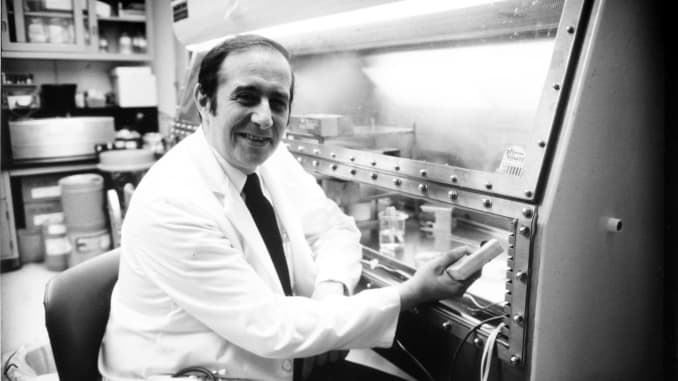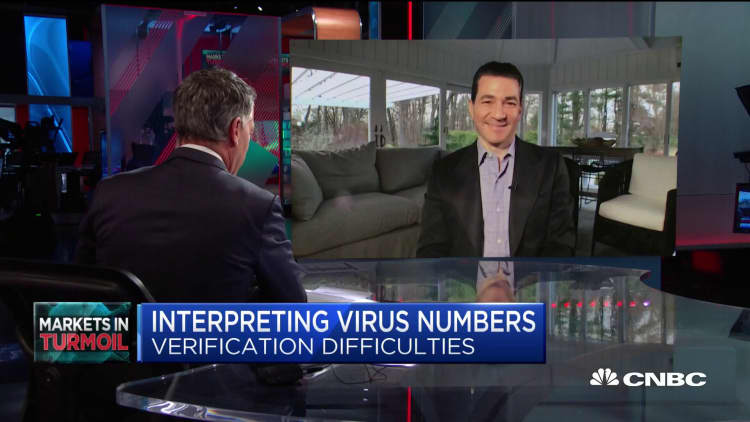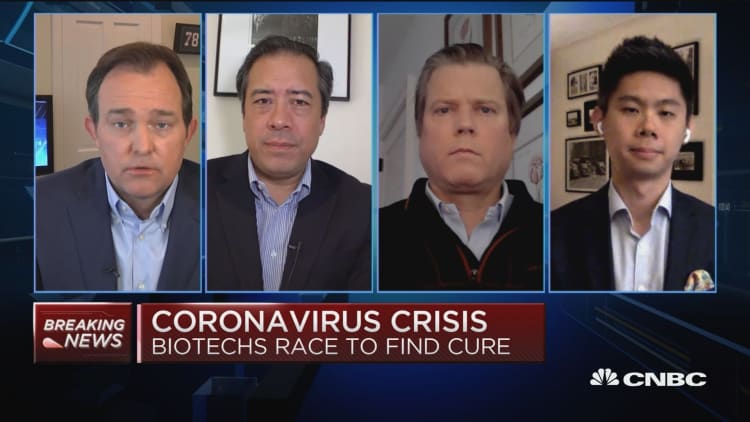- Dr. Stanley Plotkin invented the rubella vaccine at the Wistar Institute, which is credited with eradicating the disease in the United States in 1964.
- Dubbed the Godfather of Vaccines,” he has worked on vaccines for anthrax, polio, rabies and rotavirus.
- A pediatrician and vaccinologist, he is now consulting for pharmaceutical companies on vaccine development to halt the COVID-19 pandemic.

Stanley Plotkin, dubbed the “Godfather of Vaccines,” has worked on vaccines for anthrax, polio, rabies and rotavirus. In the 1960s, at the Wistar Institute in Philadelphia, Plotkin invented the rubella vaccine, which is credited with eradicating the disease in the United States. Plotkin, a pediatrician and vaccinologist, is consulting for pharmaceutical companies on vaccine development to halt the COVID-19 pandemic.
Rubella, also known as German measles, resulted in mild illness for the adults that contracted it but caused major birth defects for fetuses in utero. The ’60s saw “a rubella pandemic swept across the United States and Europe and left some 12,000 infants deaf, blind, or with both impairments,” according to Wistar Institute. Plotkin’s vaccine is the “R” in the MMR vaccine that children get worldwide.
CNBC interviewed Plotkin at his home outside of Philadelphia. This interview has been edited for length and clarity.
How does the COVID-19 pandemic compare to the rubella pandemic?
Rubella infected all kinds of people, but the danger was mainly to pregnant women. We have the current coronavirus, and it can kill people, so everybody is at risk.
Going back to rubella, there was a lot of panic among women, and I was able to calculate that 1% of all of the pregnancies in Philadelphia during the epidemic were affected by rubella. So women were very upset. Today, of course, everyone is upset because coronavirus can infect anyone and is particularly lethal for the elderly. Is today’s effort appropriate? I think so. The question is whether one can stop the spread of the virus the way it has been successful in China. Our societies are not like Chinese society, and so it remains to be seen.

Obviously, the social disruption, the economic disruption, is considerably greater than it was with rubella, so how long can we continue? I’m not the person to judge that, but I think it’s appropriate what we’re doing today to stop the spread of the coronavirus and therefore to ultimately decrease the number of infected people. If we don’t [socially isolate], then probably 70% to 80% of us will get infected.
Everyone is talking about “flattening the curve.” What does that mean?
The point is to decrease the number of people who get infected, because obviously it’s the infected people who transmit [the disease] to other people. If you decrease the number of people carrying the virus, you decrease the propagation of the [pandemic], and that’s what the [social] isolation is attempting to do.
The question is, will there be a reservoir of virus which will cause the virus to return? The results in China suggest that at least, at the moment, you can stop the spread of the virus. Whether that will happen here or not remains to be seen.

What do you think of the US government’s response to rubella vs. the coronavirus?
Although there was a lot of anguish in the ’60s and research was launched by grants through the government, [the response to rubella] was not nearly the same kind of response as with the coronavirus. It wasn’t the same panic. There wasn’t the same investment of money. There wasn’t isolation. This is a much bigger response than [with] rubella. We’re in a big rush to develop vaccines against this coronavirus. In the ’60s there were multiple efforts to develop vaccines, including my own, but it wasn’t the same all-hands-on-board as it is now.
How do you develop a vaccine?
I had worked a lot on the oral polio vaccine, and so I had learned how to weaken a virus. When I launched the project to develop a rubella vaccine, essentially it was to weaken the virus to make it into something that immunizes people but [doesn’t] cause the congenital malformations that the natural virus causes.
One of the big differences is that today, which is 40 years later, we have many different ways of developing vaccines. Now there’s something like 40 different projects to develop vaccines, with about half a dozen being far advanced. In those days, there were relatively few ways to develop vaccines, so there were only three or four projects [tackling rubella].
I have considerable hope for a [coronavirus] vaccine, but people have to understand that it’s not something like in the movies where you can develop it overnight — that it’s safe and effective overnight. It’s going to take roughly a year before there’s enough vaccine, assuming all goes well.
How has vaccine-creation technology changed since the ’60s?
In the ’60s we could kill an agent and use the killed material as a vaccine. But today we have ways of using the nucleic acids — the DNA or the RNA — constructs of the virus. We can use proteins. We can use “vectors,” viruses that carry parts of another virus [to] immunize people. And there are other techniques of making proteins that are not exactly like the natural virus but can still immunize people. So that’s why there’s something like 40-odd efforts to develop the vaccine, of which I would say about six or 10 are actually on the way to being developed as we speak, and there are two in clinical trials already.
Your rubella vaccine was better than its competitors — it produced higher levels of antibodies and had fewer side effects — but here in the United States it got sidelined and failed to win government approval for 10 years “because of politics,” according to a Science magazine article. Tell me about that.
It happened for a reason, which would not be repeated today. One of the competing vaccines was actually developed at the licensing authority, a branch of the FDA. For a pharmaceutical manufacturer, that was very appealing, because it meant that they would get a license for the vaccine because they’d be working with the licensing authority.
The vaccine that I developed was licensed in Europe at the same time. It was only after the accumulation of information about how the two vaccines worked that it was demonstrated that the vaccine that was being used in Europe was better. Therefore, the company actually dropped the vaccine that they had been making and started to produce the one that was being used in Europe.
The FDA does not develop vaccines [anymore]. [Plus], there are so many more ways to develop vaccines that you have multiple candidates, which is great.
You’ve been quoted saying that the US should license and produce more than one vaccine. What do you mean?
For two reasons — one, because until you have large-scale use of a vaccine, you don’t know everything about it; you don’t know for sure whether your expectations about the vaccine are right. It may be that something you thought was not as good turns out to be better than the one that you thought was the best. It’s only in use that you really can make that judgment.
The second, and perhaps more important point, is if we need a vaccine for the population of the world that’s not possible for any one company to make. You need multiple manufacturers, so if you have three or four different types of vaccines and they are roughly equivalent in efficacy, so much the better.
How does politics impact the creation of a vaccine?
The main thing is [funding] for vaccine development. On average, it takes about half a billion dollars to develop and manufacture a vaccine. That includes the basic science; that includes the early clinical trials; it includes the Phase 3 trials, where [they] vaccinate thousands of people [and] follow them [to assess] safety and efficacy. Pharmaceutical companies normally spend that kind of money to develop that kind of vaccine, but it takes years to go through that process. With coronavirus, scientists are trying to speed things up and to do it in a most economical way but, still, to produce a vaccine to immunize everybody, there has to be a major investment.
There are some preliminary reports that there’s more than one strain of COVID-19, just like there’s more than one strain of the flu. Do you think this could become a seasonal problem?
That information is still controversial — not everyone accepts the idea that there are different strains of the virus. That remains to be seen. There are four respiratory coronaviruses that were discovered years ago, which do cause common colds and come back each winter — whether that’s going to happen with [COVID-19] or not, nobody really knows for sure.